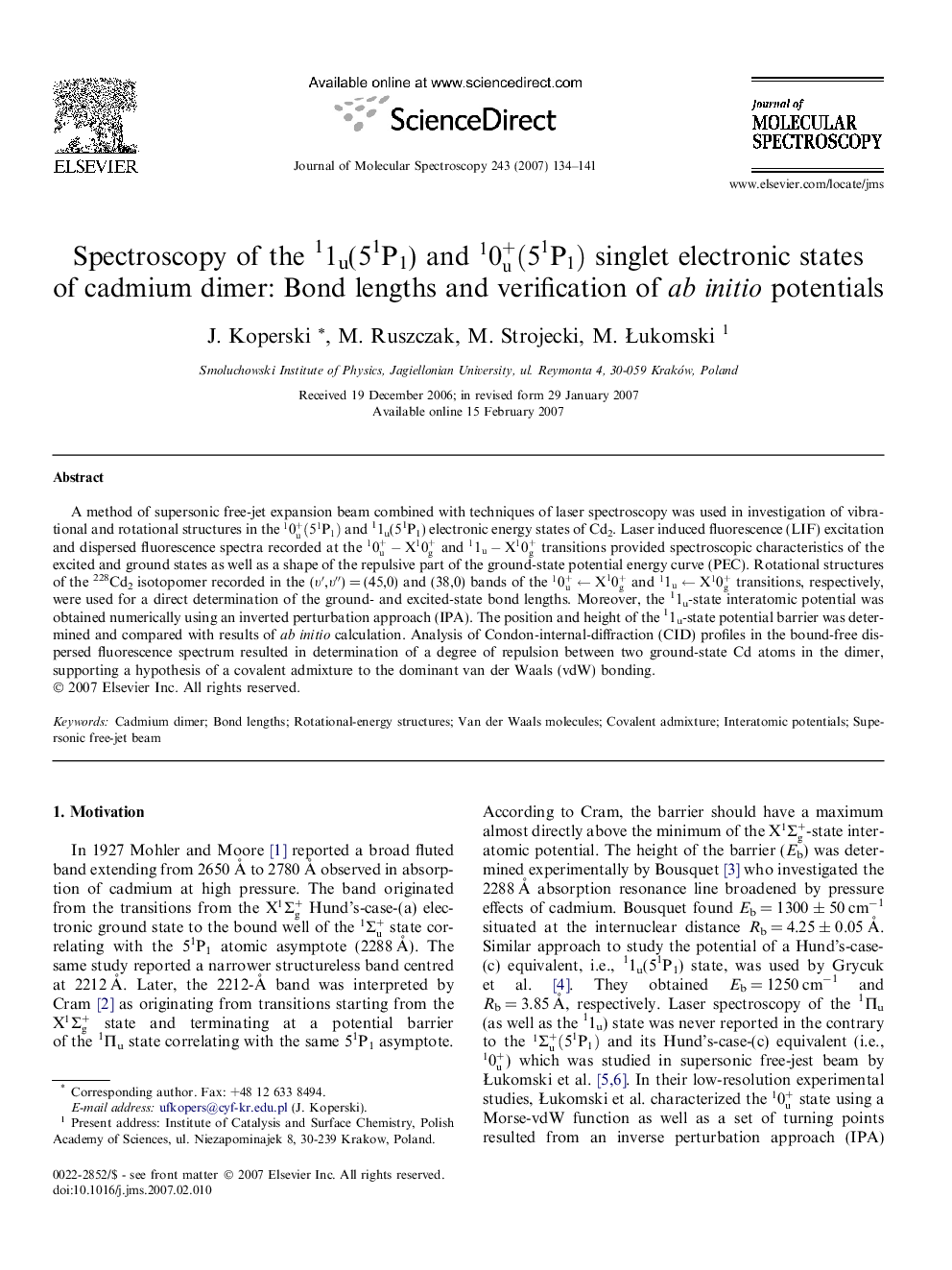| Article ID | Journal | Published Year | Pages | File Type |
|---|---|---|---|---|
| 5415950 | Journal of Molecular Spectroscopy | 2007 | 8 Pages |
Abstract
A method of supersonic free-jet expansion beam combined with techniques of laser spectroscopy was used in investigation of vibrational and rotational structures in the 10u+(51P1) and 11u(51P1) electronic energy states of Cd2. Laser induced fluorescence (LIF) excitation and dispersed fluorescence spectra recorded at the 10u+-X10g+ and 11u-X10g+ transitions provided spectroscopic characteristics of the excited and ground states as well as a shape of the repulsive part of the ground-state potential energy curve (PEC). Rotational structures of the 228Cd2 isotopomer recorded in the (Ï
â²,Ï
â³)Â =Â (45,0) and (38,0) bands of the 10u+âX10g+ and 11uâX10g+ transitions, respectively, were used for a direct determination of the ground- and excited-state bond lengths. Moreover, the 11u-state interatomic potential was obtained numerically using an inverted perturbation approach (IPA). The position and height of the 11u-state potential barrier was determined and compared with results of ab initio calculation. Analysis of Condon-internal-diffraction (CID) profiles in the bound-free dispersed fluorescence spectrum resulted in determination of a degree of repulsion between two ground-state Cd atoms in the dimer, supporting a hypothesis of a covalent admixture to the dominant van der Waals (vdW) bonding.
Related Topics
Physical Sciences and Engineering
Chemistry
Physical and Theoretical Chemistry
Authors
J. Koperski, M. Ruszczak, M. Strojecki, M. Åukomski,
